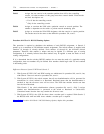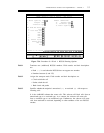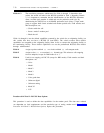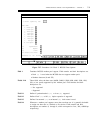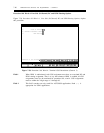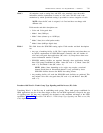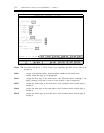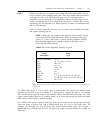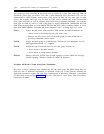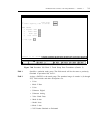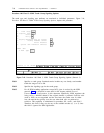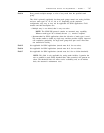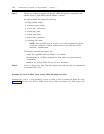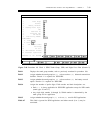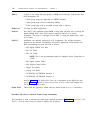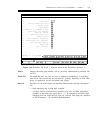
7-84
ADMINISTRATION OPTIONS AND REQUIREMENTS — GENERIC 2
This trunk type allows flexibility in processing calls as opposed to a fixed static trunk type. Both an
AAR/ARS prefix digit (procedure 103) and a DID additional digit (procedure 101) can be
administered for ISDN dynamic trunk groups. (This cannot be done for any other type of trunk
group.) The dynamic trunk type may be used for CBC service although any of the conventional
trunk types could also be used if incoming digits have been provisioned consistently. For example,
trunk type 41 could be used as a CBC trunk group to support MEGACOM, MEGACOM 800, and
SDN if the incoming digits (for both MEGACOM 800 and SDN) reflect extension numbers or seven
digit RNX-XXXX numbers. Customers can choose between 0 and 7 incoming digits to a switch.
Field 7
Assigns the dial access code restriction. Field encodes and their descriptions are:
0
1
Allows access to the trunk group via a dial access code.
Restricts and only allows access to the trunk group for trunk testing and for
providing unattended console service.
Field 8
Field 9
Assigns the trunk group as a Multifunction Terminal CO line appearance. For the
ISDN application, encode (0) is applied.
Assigns the type of network access for the trunk group. Encodes are:
0
1
Allows access to the public network
Allows access to private network facilities
Field 10
Displays and verify that the type of trunk signaling is correct. ISDN uses message-
oriented signaling. Therefore, encode 20 should be displayed.
Procedure 100 Word 2: Trunk Group Data Translations
This word is used to administer data characteristics for each trunk group. The ISDN feature does not
place any new or additional requirements or restriction on the use of this flipchart. Selecting the
appropriate translations requires the same basic considerations as previously. Therefore, a description
for these fields is not provided. Figure 7-40, Procedure 100 Word 2: Trunk Group Data Translations,
depicts this procedure.



